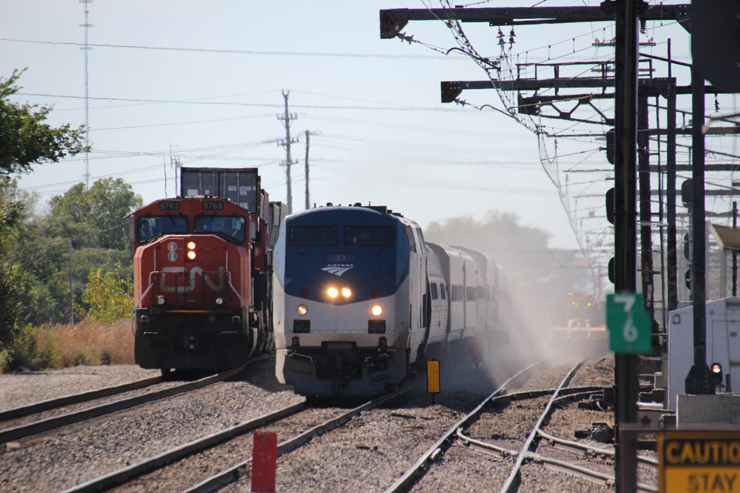
WASHINGTON — Two Pennsylvania Congressmen on Friday introduced a bill which would allow Amtrak to address freight train interference issues by taking railroads to court over the issue.
The bill, dubbed the “Rail Passenger Fairness Act,” was introduced by U.S. Reps. Chris Deluzio (D-Aspinwall, Pa.) and Brendan Boyle (D-Philadelphia), would allow Amtrak to sue railroads for violations of its statutory right of operating preference, mandated under the 1973 Amtrak Improvement Act.
“I am proud to introduce the Rail Passenger Fairness Act with Rep. Boyle to try and hold these big railroads accountable and help improve passenger rail travel for the American people,” Deluzio, a member of the House Transportation and Infrastructure Committee, said in a press release. “I also want to recognize the late New Jersey Congressman Donald Payne, who previously led this bill and was a passionate champion for passenger rail. We’re proud to be continuing his fight.”
Payne, ranking member of the House Railroad, Pipelines, and Hazardous Materials Subcommittee, died in April [see “U.S. Rep. Donald Payne … dies at 65,” Trains News Wire, April 25, 2024].
“This legislation will provide railway passengers with additional safeguards from unanticipated rail delays and cancellations,” Boyle said. “Strengthening the rights of railway passengers only enhances customer satisfaction and trust in public transport and rail systems.”
Amtrak CEO Stephen Gardner welcomed the legislation, saying in a statement, “Our customers should arrive on time, and freight railroads shouldn’t delay them with their own trains. Proper enforcement of the law is key, and the right tools must be available. We thank Reps. Deluzio and Boyle for introducing this important bill for our customers and their constituents, and we look forward to Congress continuing to discuss this issue and the best ways to ensure Amtrak customers arrive on time.”
Deluzio says the legislation is supported by the International Association of Sheet Metal, Air, Rail and Transportation Workers; the Transportation Workers Union; the Rail Passengers Association; and the Midwest Interstate Rail Passenger Committee.
A link in Deluzio’s press release intended to lead to the full text of the bill currently does not work.
The legislation’s introduction comes as Amtrak’s complaint against Union Pacific regarding delays to the Sunset Limited continues to move forward with the Surface Transportation Board; the passenger carrier says freight train interference accounts for the vast majority of host-railroad delays for that train [see “Amtrak says Union Pacific could address most causes …,” News Wire, Oct. 10, 2024]. The government is also suing Norfolk Southern over delays to Amtrak’s Crescent [see “Justice Department sues Norfolk Southern …,” News Wire, July 30, 2024].






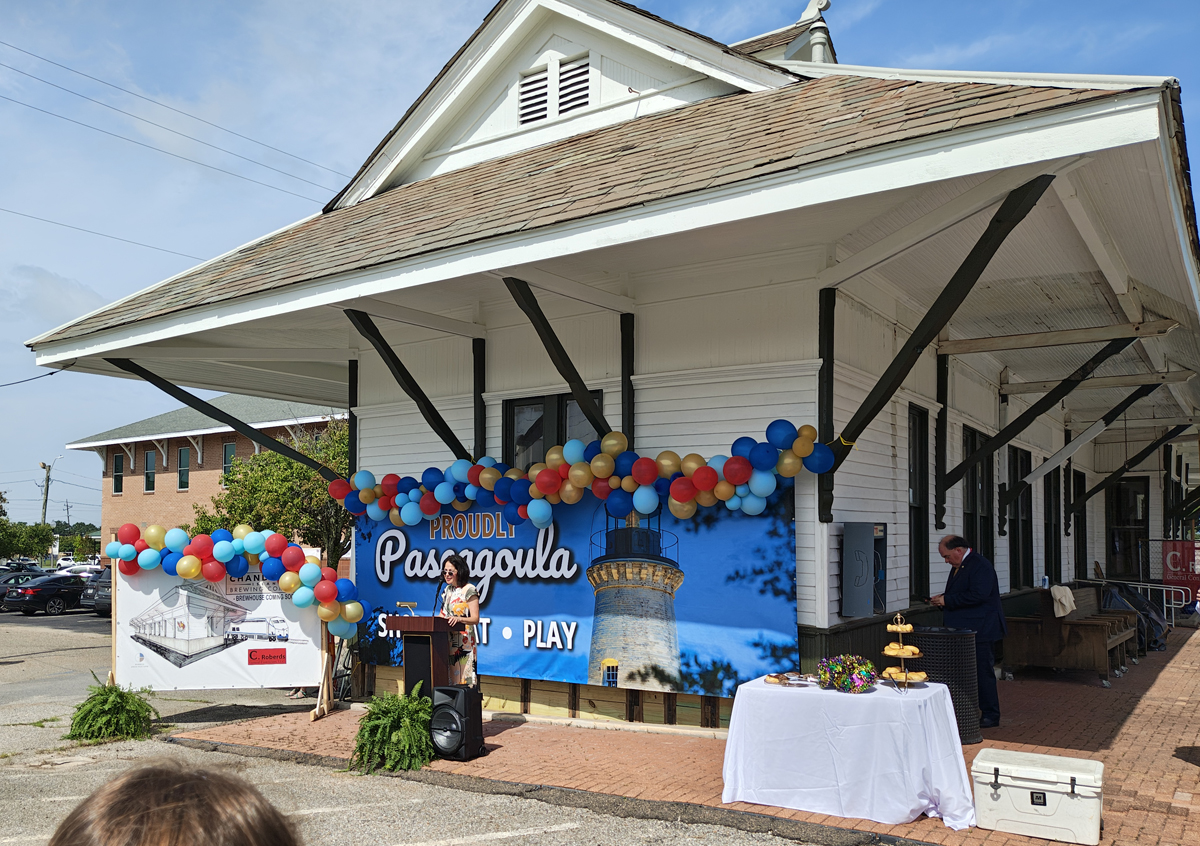
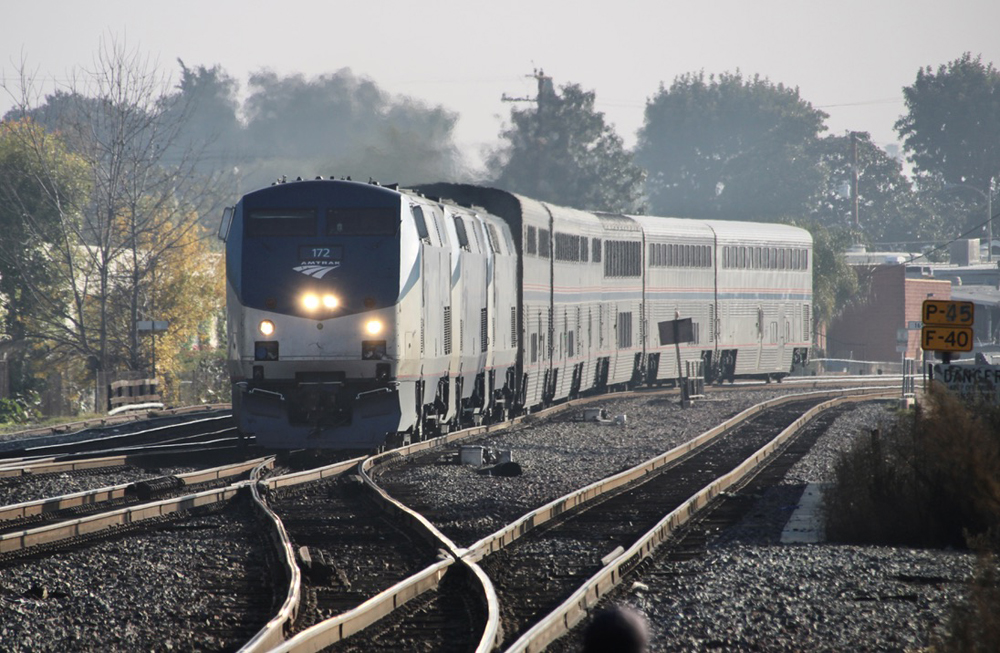
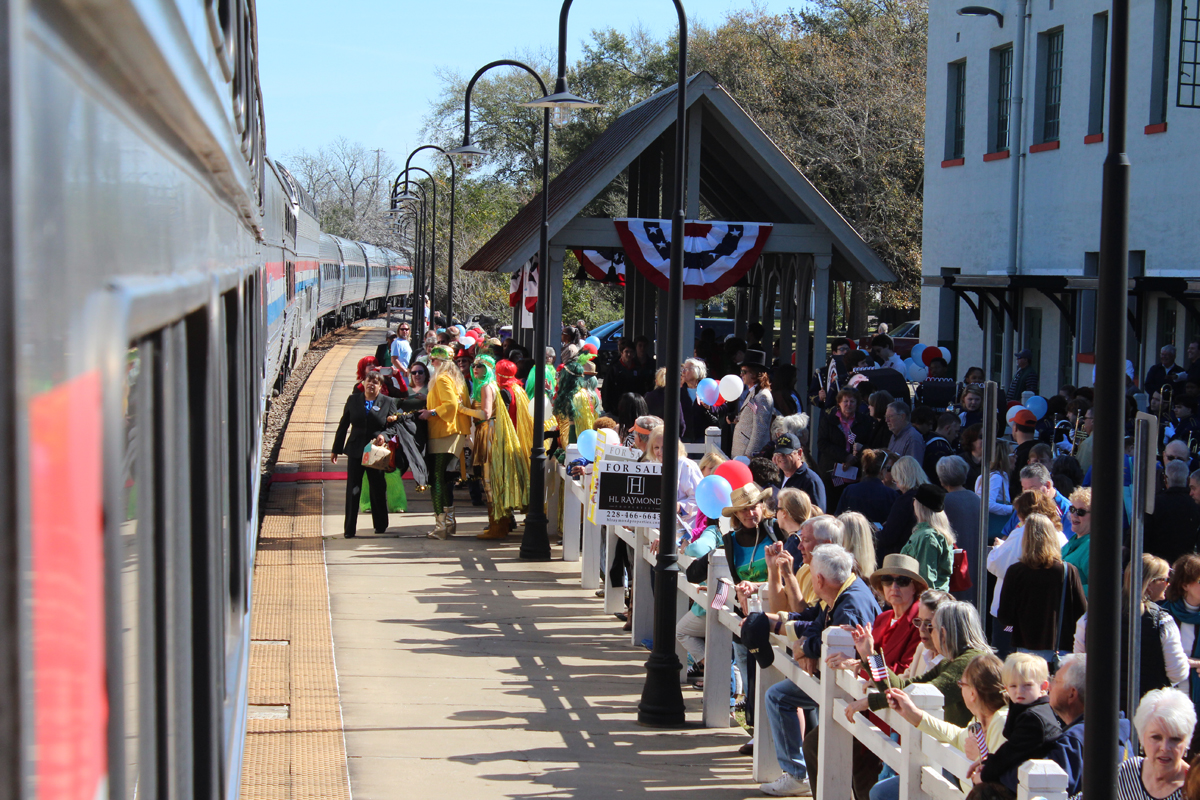
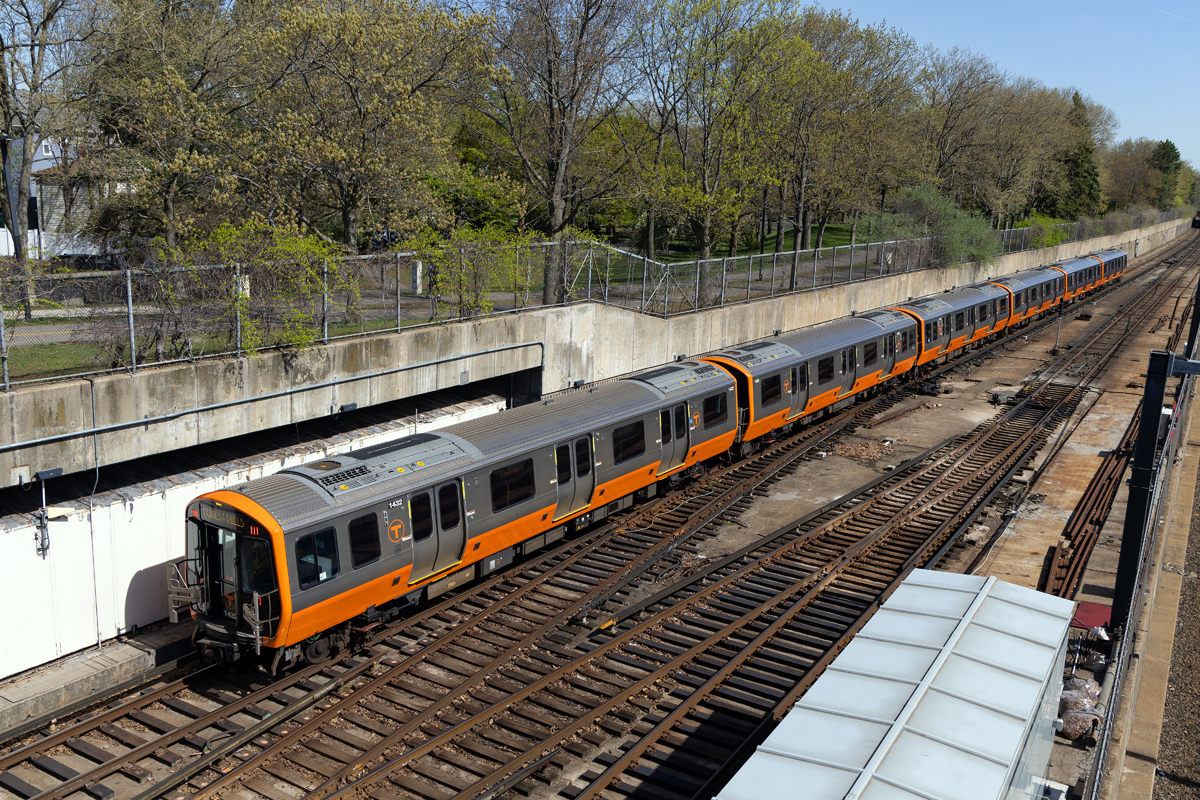




Since it’s birth in 1971, Amtrak runs their trains on freight railroads tracks, since good passenger service depends on passenger trains have their own tracks built from the grown up, other than the NEC, and some state owned tracks, Amtrak needs to either build their own tracks, or hush up, the vastness of the US makes it impossible to have HSR everywhere, suing the RR’s isn’t going to make or change anything.
The freight railroads have invested 100s of billions since deregulation in adding capacity for the operations. For freight operations those sidings work well.
The problem is when you mix 79 mph passenger trains in with 30 and 45 mph freights. When it’s just freight, the occasional 13,000 foot freight is fine. You don’t want to stop / start it for efficiency + other trains fit into existing sidings.
Throw a small, light, fast passenger train into the mix is when the problem to operations really kick in. The sidings that work fine for freight operations don’t allow that Amtrak train to pass those freights. We’re looking at spending hundreds of millions of dollars just because a once a day land cruise can’t keep overly optimistic schedule.
Chew on that last part, the land cruise. We’re getting our undies in a bunch because a bunch of people who chose to spend $2,000 on a private room for a 45 hour train ride to LA being a couple hours late. Yet these same people could’ve spent $300 on a 4 1/2 hour flight.
The train is 10-12 times slower yet they’ve chosen it. A few extra hours aren’t a concern for them. Amtrak knows this.
No land cruise for me. I travel long distance by coach and so do many other passengers.
No land cruise here for me either. I’ve only ever ridden in coach. Most Amtrak riders are not going end point to end point on Amtrak routes, they are connecting between cities that don’t have airport connections, and may not have a vehicle that is reliable to get them between their origin and chosen destination. They also may choose Amtrak to try to get to their destination rested. Given no other viable travel option in many peoples situation, yes, any delay still matters.
When Amtrak relieved the railroad companies of the obligation to provide passenger service, there was plenty of capacity for both that and freight. But the railroads reduced capacity and the they added freight, a lot of freight, to the point that there is not enough capacity. They lengthened trains without adequate siding length or double tracking. They should have, and now should, increased track capacity to the extent that would allow all of the passenger trains that they used to run to run at the speeds that those trains ran without interference by the increase in freight traffic. I say this as a small, long-term investor in two railroad companies that would profit in the long run from increased track capacity.
Okay. Who pays for it? If you offer public money for just track enhancements the railroads almost always say “no.” Why? Because then comes the cost of maintaining the track they don’t think they need AND the extra property tax burden. These negotiations take so long because the railroads want 1) the money for the track, 2) money for maintaining the extra track and 3) tax deferment for a period of time to allow the hardware to depreciate.
As a counter, look what Brightline does.
This country has certain public utilities.
Partial list–Electric, phone, cable, barge operations, railroads, airlines. Some use public ROWs such as electric and phone. Many fought requirements to provide service to small customer concentrations. Study the fights for REA and universal telephone service. Many telephone customers could not get private lines but were on party lines with as many as 12 on one line. My parents were on a 8 party line inside the city and phone company fought requirement after WW-2 to provide private lines. Can you imagine your internet on a party line?
As far as I can see all public utilities should be required to serve all customers equally no matter how small or large. Why should the RRs be exempt from serving passenger trains and small freight customers when other utilities have to serve all customers? These delays of passenger trains are a symptom of the RRs not serving small freight customers.
The railroads were partially deregulated in 1980. Ma Bell was broken up in 1982. There were some attempts at electric dereg on a state-by-state basis in the late 90s/early 2000s. Landline phone service is on the ropes. Electric service is relatively unchanged with rates set by negotiation between the company and state regulators. The rate agreed upon guarantees service to the customer and a little left over for the shareholders.
And then there are the railroads. The ICC rate tables remained despite MASSIVE public investment in railroad competition, mainly because the rate tables were to the railroads what price/kw-hour are to electric utilities: guaranteed income to cover costs. First came Amtrak relieving railroads of the responsibility of passenger trains…overriding whatever promises or deals were made to contrary a century earlier. Then came Stagger’s and out went the ICC rate tables. Everyone thought it was enough to have statutory dispatching preference. But there was no money to back it up. If you want to drive in the Lexus lane on the highway you have to pay for it. Amtrak’s access fee doesn’t come close to the value of the track slots. Out of 140,000 miles of railroad 21,000 are used by passenger trains. How do we enhance just those for passenger fairly?
The most sensible comment is from John Rice. The failure is the lack of government action to force the railroads to provide public service. This applies to passenger service, but even more importantly freight. How many articles has Bill Stephens written about the decline in carload traffic, investment, etc, etc.
Railroads today are just like Boeing or Intel; they are being run by accounts and lawyers and systematically being ruined. We’re in a new gilded age of Robber Barrons.
Whatever the merits or demerits of the legislation, I can’t see it solving AMTRAK’s problems. After all, AMTRAK’s Sunset Limited case has now dragged on for two years with no end in sight. Even blatant criminal cases like murder (e.g., the Idaho college murders) can take over two years from arrest to beginning of trial.
I can see a Constitutional challenge under the Unlawful Takings Clause.
What Amtrak needs to do is acquire its own Right-of-Way, then build, operate, and maintain its own railroad network.
When you draw up the costs of such an undertaking it becomes financially obvious why it hasn’t happened already. Once upon a time freight and passenger trains coexisted relatively peacefully. Today that’s not the case as the “railroads” are now freight railroads. Track capacity costs money and owning, maintaining and paying property taxes on capacity over what’s needed for freight is unacceptable to the shareholders. The real answer is mitigation of the costs of capacity…and that means state cooperation either willingly or coerced.
It is less than a month before election day. What an amazing coincidence this bill comes forth now. In another month interest in this bill should slowly fade away.
Boyle’s District in Philadelphia is safe; Deluzio’s in suburban Pittsburgh (Aspinwall) is contested. In any event, the current term in Congress ends in early January. Bill will expire if not passed.
My thoughts exactly: political grandstanding!
The railroads need to bring this to a head. They are privately owned corporations and forcing them at gun point to reduced their service to their customers for a bureaucratic socialist run rail passenger system that has cost taxpayers billions is a violation of the rights of the railroads under the constitution. They should counter sue and let it go to the supreme court.
…. and readers consider ME, ME to be the right-winger of the family ….
Seriously, though arguments can be made on BOTH sides. Kenneth Bird brings up valid points (above), but there is a counter-argument. Railroads are private corporations but they’re also regulated monopoly common carriers with a duty to serve the public even at a cost to themselves.
Before I retired, I worked for an annoying customer of Wisconsin Electric, later known as We Energies. Part of my job was arranging for electric service hookups. We had a zillion small loads all over the place, some of them where the utility had to extend a power line to meet us. The utility probably lost a lot of money serving us … but it was their obligation.
I took professional pride in working with the utility – or aniticipating the utility — to minimize its costs. Further than that, I couldn’t go.
Railroads were given extraordinary Federal authority in order for them to complete their network and operate. An authority they still freely use to maintain themselves. They were given extraordinary amounts of public land by the same government, land that was considered part of the common good.
Not unlike airwaves allocated by the FCC to private companies, not unlike airspace allocated by the FAA to private companies, the use of the public asset is to be maintained by the same authority.
Therefore it is within the rights of the same Federal authority to update and modify the rights extended to these private entities as they see fit within the public interest.
These private entities willingly and freely gave up their rights to serve the public interest by providing passenger service, rights they returned back to the people through the Federal government.
The public has the right through it representatives and vote to revoke those services in the public interest at any time.